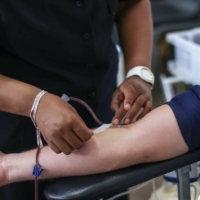Study Assesses Tools Used to Prioritize COVID-19 Resources
A new study by the Center for Neighborhood Knowledge (CNK) at UCLA Luskin assesses four vulnerability indicators used by public agencies to identify neighborhoods most in need of pandemic-related resources and services. The choice of indicators used in prioritizing the COVID-19 interventions has implications for how many people of color and minority neighborhoods are served, the study found. Race and ethnicity are important because people of color encounter multiple dimensions of inequality that are only partially reflected in the indicators, said CNK Director Paul Ong, who led the research. The study aims to help ameliorate a policy dilemma. “Despite the reality that African Americans and Hispanics have suffered disproportionately from COVID-19, the 1996 Proposition 209 prohibits the state from explicitly using race as a factor in the provision and distribution of pandemic relief and coronavirus vaccines,” Ong said. Of the four indicators assessed, an index measuring pre-existing health vulnerabilities is the most likely to be inclusive of people and neighborhoods of color, the study found. It also recommended that public agencies develop new indicators tailored to the unique policy goals created by the pandemic. The research was conducted in partnership with the UCLA Center for Health Policy Research, the UCLA BRITE Center for Science, Research and Policy, and the public interest research group Ong & Associates.










Leave a Reply
Want to join the discussion?Feel free to contribute!